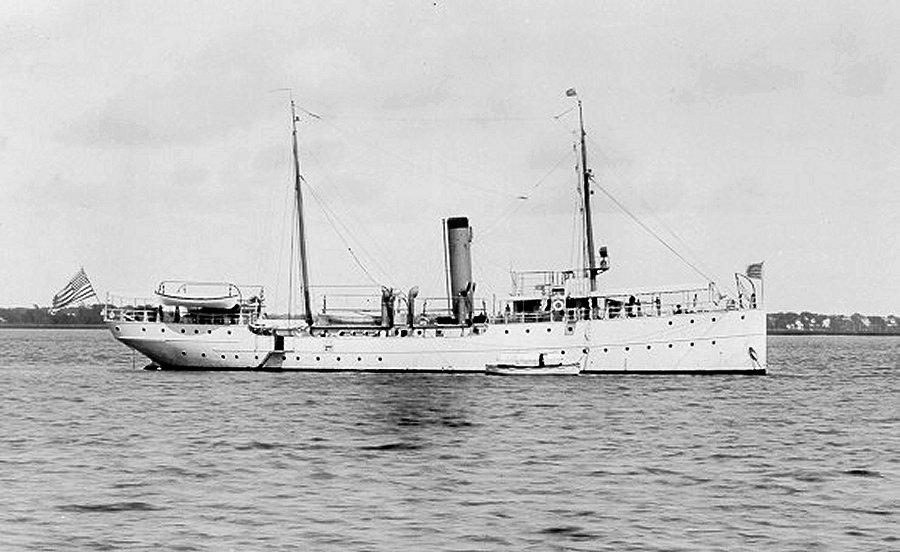Relationship to Titanic disaster / inquiries.
Following the Titanic disaster, was assigned to the International Ice Patrol. Worked with Miami out of Halifax, Nova Scotia.
Data:
March 18, 1908
Launched.
November 6, 1908
Commissioned.
January 24, 1909
Assisted in towing liner Republic, damaged in collision with SS Florida off Nantucket.
When Republic sank, Seneca took off crew that had stayed aboard the damaged liner.
1909-1912
Ceremonial and escort service in addition to regular duty.
March 29, 1913
Following the Titanic disaster, was assigned to the International Ice Patrol. Worked with Miami out of Halifax, Nova Scotia.
April 12, 1914
While on ice patrol, rescued four survivors, adrift for 10 days, from the British freighter
Columbian.
1914
(As revenue cutter): Three ice patrols.
January 28, 1915
Revenue Cutter Service merged with the U.S. Life Saving Service to form the U. S. Coast Guard
1915
(As U. S. Coast Guard cutter): Three ice patrols.
1916
Three ice patrols.
April 1917
After declaration of war with Germany, Seneca joined several USCG cutters in making up
Squadron 2 of Division 6 of the Atlantic Fleet Patrol forces. They served as convoy escorts, providing protection from submarine attack.
March 25, 1918
Rescued 81 members from the torpedoed HMS Cowslip.
June 25, 1918
(Off Gibraltar): Rescued 27 survivors from the torpedoed British SS Queen, traveling in convoy.
September 18, 1918
(175 mi. N by W from Cape Villano, Spain): Assisted in the crew evacuation of the British SS Wellington, torpedoed in convoy. Seneca put aboard Wellington a 20-man volunteer group from her own crew to try to take the stricken vessel to the nearest port, Brest, France. Of Wellington's crew, 11 volunteered to stay aboard. But the crippled ship was struck by a severe storm. Water reached her boilers, which exploded; 11 Seneca men and five Wellington men were lost.
1921-1924
Participated in actions against several "rum runners." In winter, resumed her ice patrol duties.
July 26, 1927
Placed out of commission.
April 20, 1928
Restored to commission; stationed at New York.
September 23, 1932
Permanent station, San Juan, Puerto Rico.
June 1, 1934
Permanent station, Mobile, Alabama.
March 21, 1936
Placed out of commission by the U. S. Coast Guard.
September 3, 1936
Bought by Boston Iron and Metal Co., Baltimore, Maryland. Sold to the Texas Refrigeration
Steamship Line which went bankrupt; was repurchased at auction by Boston Iron and Metal Co.
1941
Returned to Coast Guard service.
1942-1948
Turned over to Commonwealth of Pennsylvania as training station for naval cadets. Renamed Keystone.
1950
Sold for scrap at Baltimore, Maryland.
| 
